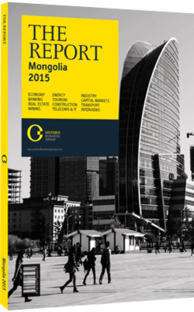B. Indraa, Executive Director, Tourism for Future NGO, and Director of the Governing Board, Mongolia National Tourism Organisation: Interview

Interview: B. Indraa
How will being the official partner country for International Tourism Bourse (ITB) Berlin 2015 benefit Mongolia’s tourism industry?
B. INDRAA: ITB is the premier tourism and travel trade show in the world, and the significance of us participating, besides learning more about current trends in global tourism development, is the opportunity to secure partners and sign contracts. Over the five days of the fair in March 2015 we could reach up to 570m viewers across the globe; 8000 media representatives will be highlighting the event and more than 10,000 trade buyers will be there representing at least 180 countries. So it will be an excellent opportunity for us to say to the global tourism community, “Here we are, this is what we have to offer, and we are committed to improving our capabilities”.
In addition, there are concrete examples of the benefits of partnership from past participants. Every partner country so far has had an immediate increase in tourism arrivals following the fair; for example: Turkey saw a 48% rise in arrivals after participating in 2010, and Poland saw an 11% increase after doing so in 2011. If we prepare properly, we are hoping to see at least a 30% rise over the coming years. It is also important to remember that our participation in ITB is just one part of our new promotion strategy, “Mongolia: Nomadic by Nature,” which we hope will bring 1m tourists to the country by 2016.
What has happened to arrival numbers recently?
INDRAA: In 2014 Mongolia had fewer visitors than in 2013. We are still waiting for the official numbers, but based on projections we had 420,000 visitors in 2014, compared to 450,000 in 2013. This decline is partly a result of our own economic difficulties and partly a result of external factors. Worldwide there has been a trend among travellers to shy away from a few long holidays to short but multiple ones, especially in the European and North American markets. Given its remoteness, Mongolia falls into the former category. In addition, Japan – traditionally our strongest foreign market – has focused mostly on domestic travel since Fukushima in an effort to help rebuild the local economy. These global trends have been exacerbated by the rising costs of travelling to and within Mongolia due to factors such as the increase in the price of fuel, and, until now, the lack of concentrated promotion on our part. To counteract these trends, we need to focus on building on our competitive advantages.
What segments of the industry pose the greatest potential in terms of future development?
INDRAA: Mongolia is not a mass-market destination and it never will be, so we need to focus on areas where we offer something unique. For instance, we need to better promote ourselves as an adventure travel destination for trekkers and hikers – particularly popular with European and North American travellers – by improving the quality of guides and facilities. Add horse-back riding, biking, mountaineering to this list and that certainly places Mongolia as a potential destination in the minds of adventure seekers.
We also need to leverage our traditional role as a neutral country for hosting negotiations in order to develop the meetings, incentives, conferences and exhibitions segment. Many countries in South-East Asia have made similar shifts, and there is no reason, if the infrastructure is built, that we could not also make this transition. Three- to five-star hotels in Ulaanbaatar have pledged to lower room rates by 50% during the off-season, and this should boost visitor numbers during the winter. Winter tourism is an area we are focusing on, trying to develop products that would appeal to foreign visitors. We are working with three Southern Gobi provinces to develop something around the theme of camels, as the animals reach the height of their beauty and strength by October. There are opportunities for similar community-based products, such as bird-watching or nomadic experiences, regardless of whether they would be specifically for the winter.
You have reached the limit of premium articles you can view for free.
Choose from the options below to purchase print or digital editions of our Reports. You can also purchase a website subscription giving you unlimited access to all of our Reports online for 12 months.
If you have already purchased this Report or have a website subscription, please login to continue.

